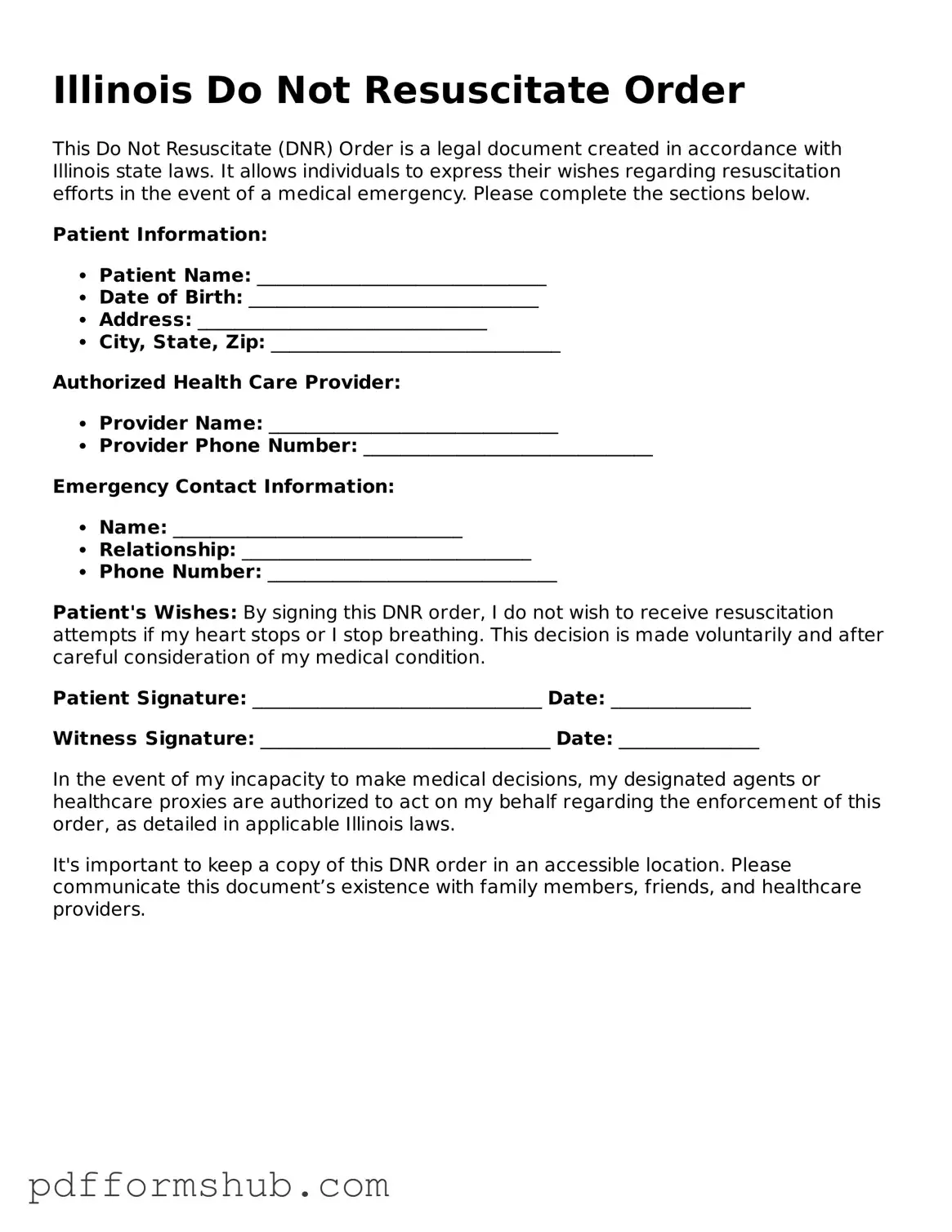Attorney-Verified Do Not Resuscitate Order Form for Illinois State
A Do Not Resuscitate (DNR) Order in Illinois is a legal document that allows individuals to refuse resuscitation efforts in the event of a medical emergency. This form ensures that a person’s wishes regarding life-sustaining treatments are respected, particularly in critical situations. Understanding how to properly complete and implement this order is essential for anyone considering it.
Take control of your medical decisions today by filling out the Illinois Do Not Resuscitate Order form. Click the button below to get started!
Customize Form
